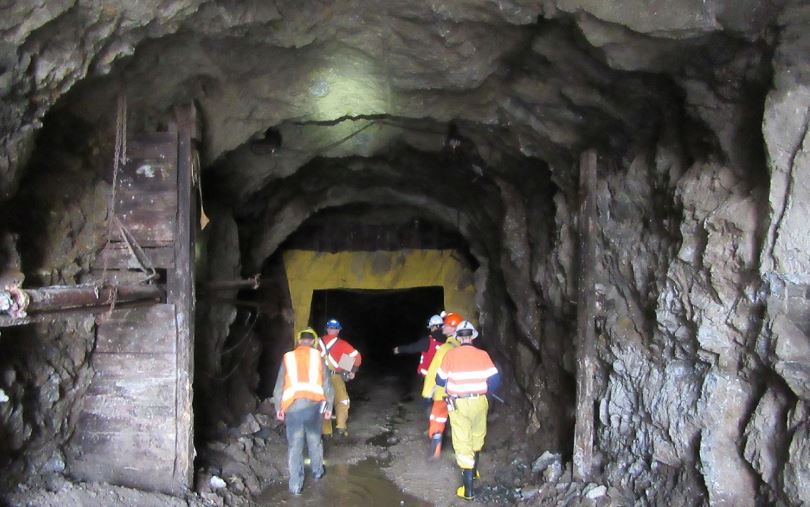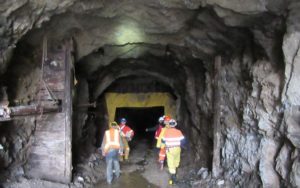Skeena releases new Snip gold assays, eyes aggressive program for 2018

The Snip gold mine's 440 Portal vent door. Source: Skeena Resources Ltd.

Skeena Resources Ltd. [SKE-TSXV] has released highly impressive gold assays from underground drilling that the company’s flagship Snip gold project located in northwest British Columbia’s fabled Golden Triangle region. Underground drill hole UG17-013, for example, returned 341.00 g/t gold over 1.5 metres, the company said in a press release.
Skeena shares reacted by jumping 4.55% or $0.03 to 69 cents on the TSX Venture Exchange as markets continued to assess the results. Early in the day, the stock traded up to 70 cents.
Drill hole UG17-013 is among 17 holes announced on December 12, 2017. They represent the first batch of a 72-hole, 9,000-metre underground program.
In March 2016, Skeena secured an option to acquire a 100% interest in the former Snip gold mine from Barrick Gold Corp. [ABX-TSX, ABX-NYSE]. Snip was a high-grade mine that produced approximately 1 million ounces of gold from 1991 to 1999 at an average gold grade of 25 g/t at a 12 gram-per-tonne reserve cut off.
After spending $3 million and reviewing over 280,000 metres of historical surface and underground drill assays, the company said it was launching the 9,000-metre underground drill program to focus on potential new production areas near existing underground development.
At the same time, the company said it planned to target numerous mineralized footwall structures that were not included in the historical Snip mineral resource. Drilling is intended to confirm gold mineralization left behind by the previous operator in the Twin Zone and footwall vein structures, including the 150 and 130 veins, the 412 Zone and the 200 Footwall Zone.
The Twin Zone accounted for 61% of the historical production.
In its December 12, press release, Skeena said UG17-013 intersected high-grade gold across a singular sample of mineralized 150 Vein.
The company said drilling has verified the historical data in the Twin Zone and 150 Vein by successfully supporting the anticipated geology and mineralization models.
Skeena CEO Walter Coles said he is pleased with the results. “The first campaign of underground drilling gives us greater confidence in the decades-old data such that we can utilize the past drilling and build upon it for a maiden resource at Snip,” he said. “Once our technical team is comfortable with the data, our 2018 plan will be to aggressively expand the known zones and to prioritize previously overlooked areas with the highest exploration potential,” he added.
Skeena is working toward the preparation of a maiden resource estimate. The company said additional assays results are expected soon.
